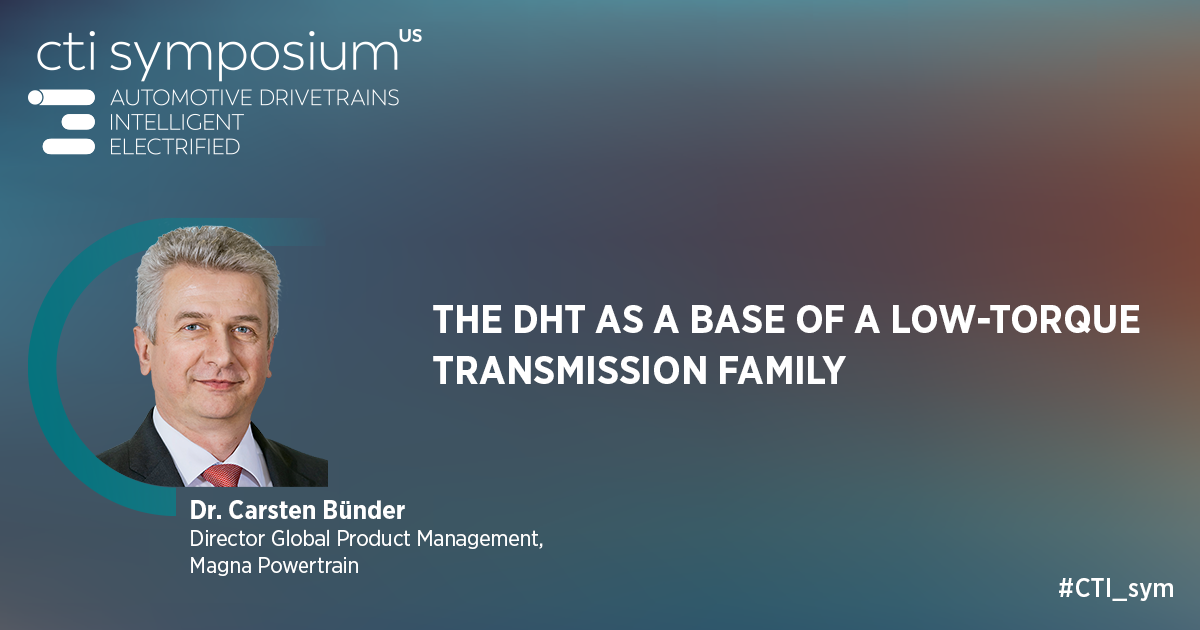
So far, the DHT (Dedicated Hybrid Transmission) has often been associated with a ‘single-purpose’ solution with a fixed architecture, thus limiting usability to certain applications, segments and performance levels. Real-life requirement conversely demand for a transmission with flexible functionality that can be scaled to a variety of segments and use cases.
Addressing about 80 percent of the global market for low- to mid-torque applications, Magna has therefore developed a new high-voltage DHT architecture, which enables full DHT functionality with minimum complexity but at the same time allows for deriving 48V mild hybrid and conventional ICE powertrains.
Four gears are enough
The base architecture of the ‘DHTeco’ is a 4-speed dual-clutch transmission that builds on the same components as other Magna DCTs, e.g. the 7DCT300 with seven speeds. Hybridization is made available by a 120 kW e-machine in P2.5 arrangement. In accordance with the common DHT definition, the e-machine takes an indispensable role: It replaces the 1st and reverse gear and it allows for just four mechanical gears to cover ICE operation, while the EM itself has two speeds at its disposal.
What makes this approach different to single-purpose DHTs, is the compatibility with ‘traditional’ use cases: The DHTeco still includes the dual-clutch, only for shifting, not for launch. It also includes the synchronizers, thus not requiring e-machines to synchronize shifts. And by adding just another synchronizer to the base DHT, coupling the two sub-transmissions on demand, two cascaded logical gears can be added.
Scaling electrification along use cases
The added logical gears allow for a 6-speed transmission with no other internal modifications. In fact, the 6DCT230 is still a physical 4-speed transmission with all these cost, weight and size advantages that are crucial for conventional low-cost applications, usually in association with restricted space conditions in small cars.
While these two transmission types represent upper-end (high-voltage DHT) and lower-end (low-cost conventional) use cases, there is a further scaling path: Adding a small e-machine with 25 kW peak power and leaving the logical gears in the system results in a 48V mild hybrid transmission with six gears. Again, the package resembles a small physical 4-speed transmission. In conjunction with the P2.5 hybridization, this allows for compact and efficient 48V hybridization, which is likely to play a major role, given upcoming fleet consumption regulations.
Scalable and modular approach
These regulations will make high-voltage electrification inevitable. With that in mind, DHTs are a highly promising approach to enable efficient hybridization while reducing complexity at the same time. Yet the DHTeco is no closed solution restricted to high-voltage hybrid drives, it´s the starting point for conventional and 48V applications as well, while maintaining simplicity. The idea behind that: scalable CO2 reduction, economies of scale on component level, reduced package – ultimately affordable electrification to reduce emissions on a large scale.
During the 14th CTI SYMPOSIUM USA Dr Carsten Buender, Director Global Product Management, Transmission Systems at Magna Powertrain, will speak about high-volume applications and compare competing solutions regarding their efficiency in electric and hybrid operations.
